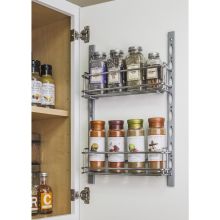6 Tips for Downsizing Your Home

Whether you are an empty-nester, looking for less house to maintain or just yearn for the simplicity of an apartment, downsizing from a large home to a smaller one can require a lot of work. Not only do you have to cull your belongings, you also may have a hard time with severing the emotional ties you have to some of the items you have accumulated.
However, most people who downsize report afterward that they feel freer with fewer things and were glad they went through the process. Here are some tips on how to get going on your downsizing project.
1. The Upside to Downsizing
If the motivation to get started seems to be eluding you, think about what you could gain by moving to a smaller space. If your mortgage is reduced or eliminated, you could afford that trip you’ve always wanted to take or start investing more each month in your retirement fund.
Even from the non-financial standpoint, there is plenty to be gained by downsizing your home. Who doesn’t want to have less square footage to vacuum or yard to maintain? Your time could be free to do some of the things you really want to be doing instead of what you have to do.
2. Take Inventory
First, take a look at what you’ve got. Imagine what you would take if you had to choose just 10 items. This exercise will tell you what’s most important to you. The list should not include things you could easily replace, such as furniture, or items you have not used in years.
Start by writing three lists:
- Items you absolutely must keep.
- Items that you can simply let go.
- Items that you want to donate or giveaway.
The first list must be the smallest if you want to fit it all into a smaller space. Things you can let go can be sold in garage sales, on the Internet or elsewhere. For items with little value or that you just don’t need, plan to donate them to charity. Don’t just dump the whole lot at Goodwill, however. Plan to give specific items to nonprofit organizations that might need them, such as bedding to a homeless shelter or toys to a charity for low-income families.
3. Study What You Have In Storage
Now, go to the spot in your house that is full of boxes. It might be the attic, the garage or a spare bedroom. Think about how long it has been since you opened some of the boxes.
Now, many of these items might be things you want to pass on to your children, such as high school yearbooks, grandma’s embroidered pillow, or those antique woodworking tools that belonged to your great-grandfather. But for the purposes of downsizing, you might want to pass them on now instead of waiting until you are older.
For all the other boxes you haven’t look in for a decade, it’s probably time to let go. The belongings inside haven’t been needed in a long time, so you likely won’t need them after a move. This is a tough process, but be realistic about what you really need and how much space you will have in the new place.
4. Clear Out Your Children's Rooms
If all your children have left the house, it’s likely that you are thinking of downsizing your home now that you do not have to accommodate for their space anymore. Resist the urge to maintain their bedrooms for return visits.
If they have their own homes now, you just don’t need the extra bedrooms, and you certainly don’t need those old band posters they had as teens. If there are items your children would like to keep, let them sift through the rooms to choose what they want. The rest can be donated or sold.
5. Prepare for a Sale
Once you have chosen the items you’d like to sell, choose what will do fine in a garage sale versus the larger-ticket items that you might put on Craigslist or on consignment.
It can be tough, but you have to price items according to what other people might realistically pay, not the value that you put on the object. Just because you spent $200 on those boots does not mean you can price them even as high as $50. If you get 10 percent of what you paid, you are doing well. Remember, any amount of money is better than nothing when you are looking to downsize.
If you have bulky items such as furniture, large rugs, or decorative mirrors, you might want to research the consignment options in your area. Though these shops usually take a portion of the sales price as a fee, items for sale tend to go for a higher price point, which can offset this additional cost.
Keep your goal in mind: You want a little money and a lot more freedom from “stuff”.
6. Think About the Big Picture
A lot of the items you have in your home you might have purchased because you expected to need them sometime in the future. Well, the future is now.
If you haven’t used these items yet, you likely won’t in the coming years. You need to be brutally honest about whether those extra things–such as those wine glasses you’ve been holding on to for when you host a giant party, or that piece of exercise equipment that is gathering dust in the corner–are going to be moving with you to your new place.
When it comes to future purchases, resist the urge to buy lots of something just because it is on sale or because you think your children might want some. You have to be selective about what you bring into your home now that it is smaller.
Final Thoughts on Downsizing:
On a related note, if you can’t cull your belongings enough by moving time, have a plan in place for where you will be storing things in the meantime.
If you choose a storage unit, sign a three-month lease at the most. This will give you a "downsizing deadline" for cleaning it out. Or, you may want to give some of your items to friends or family. If this is the case, be sure they really want the gift. Many people also are struggling to reduce clutter at home, and they might be too polite to refuse your offer.
You may have lots of reasons for downsizing your home. If you are methodical about the process and realistic about what you truly need, paring down your belongings can be a relatively simple and freeing process.


